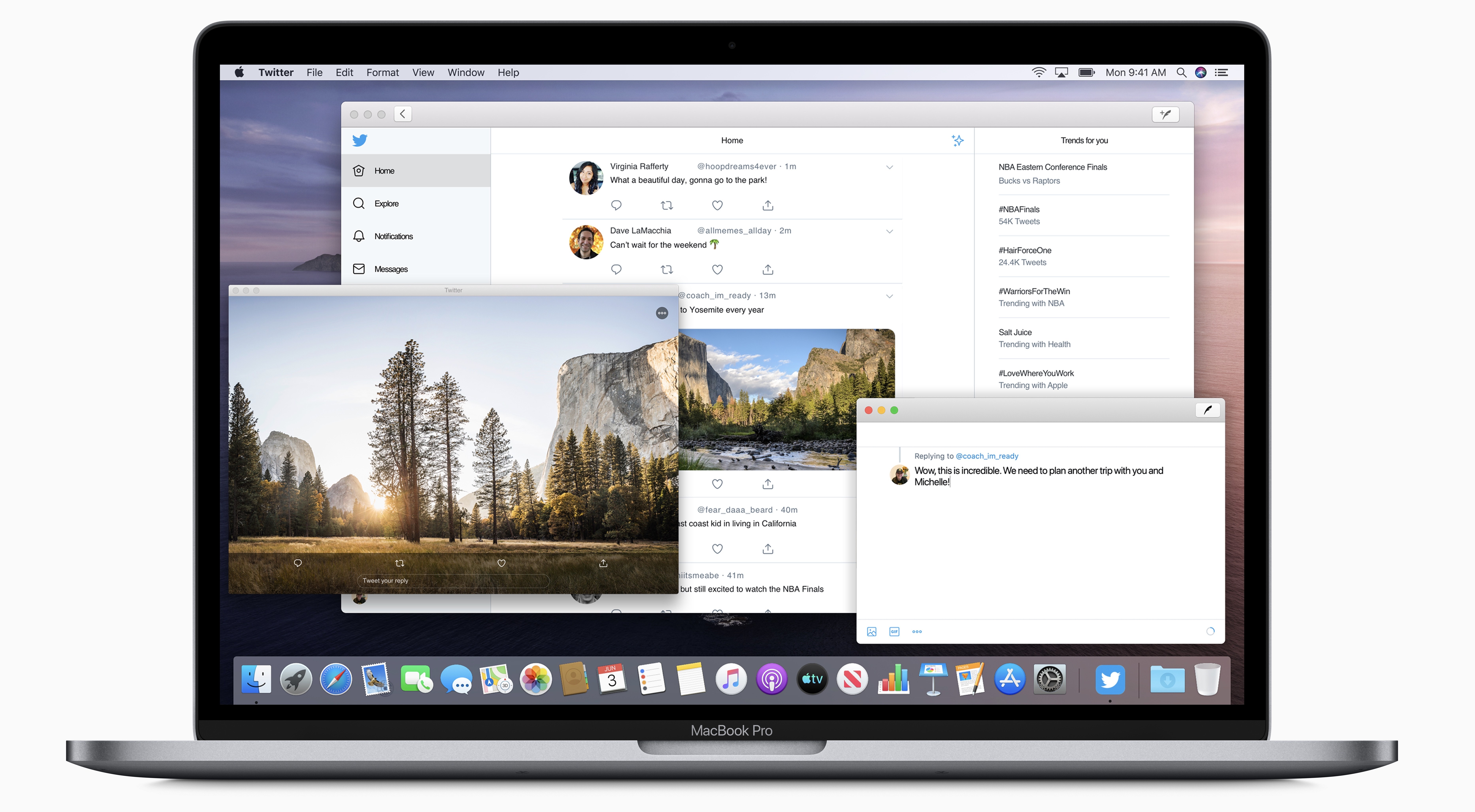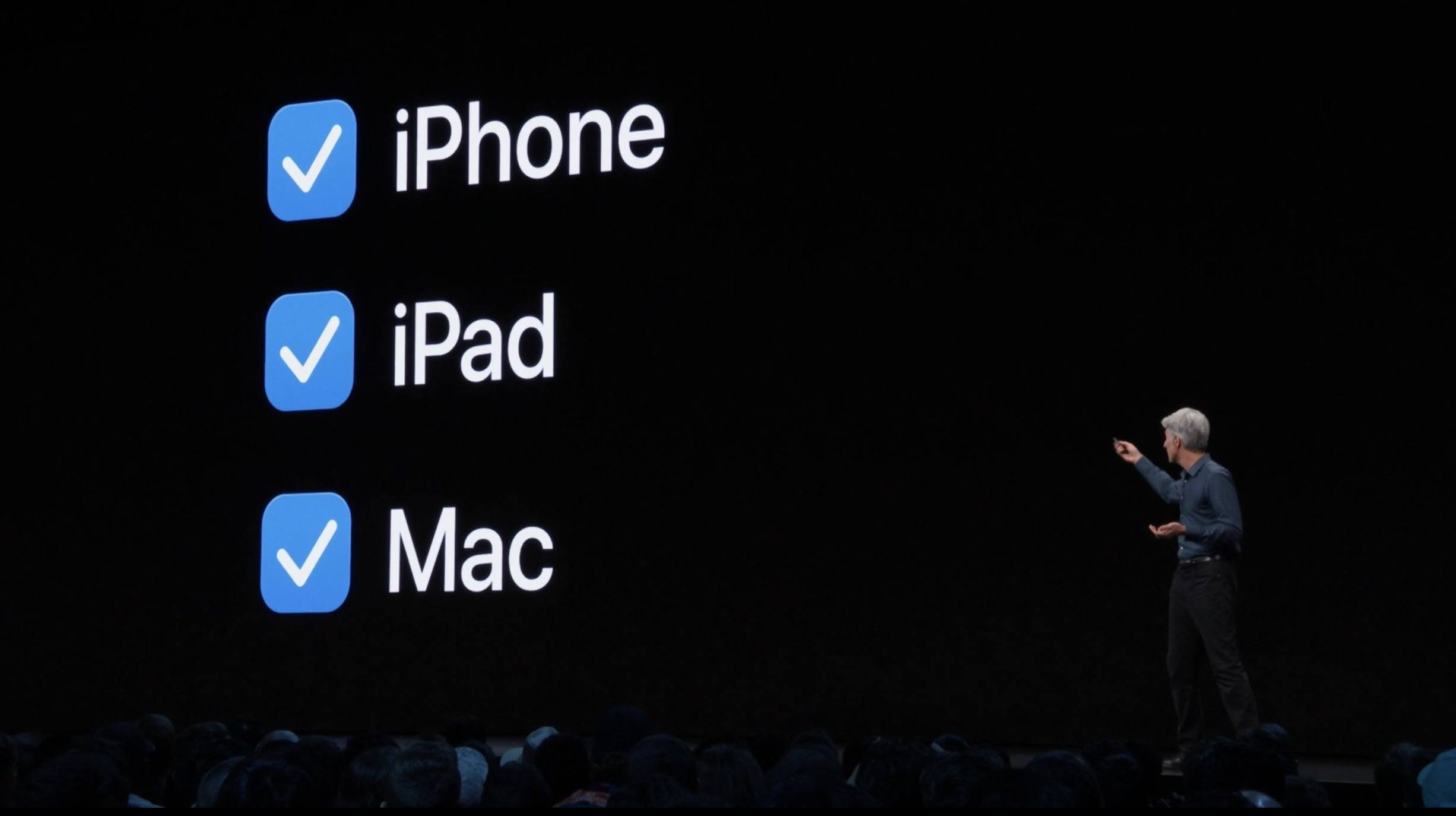Yesterday at Apple’s biggest developer event of the year, the company shared details on a project that was teased last WWDC, and has been the subject of endless speculation ever since. Codenamed Marzipan, but announced as Catalyst, the project promises a new, easier way for developers to bring iPad apps to the Mac.
Apple didn’t spend much time on Catalyst in its WWDC keynote, but more details came out later in the day and through the company’s developer portal. Ultimately, for developers to bring their iPad app to the Mac, it all starts with a checkbox in Xcode.
If an app is iPhone-only, the Mac checkbox in Xcode won’t appear, because Catalyst currently only supports bringing an iPad app to macOS, not an iPhone app.
One of the key pre-requisites stressed by Apple for turning an iPad app into a great Mac app is that the iPad app needs to itself be great. This means supporting all modern iPadOS technologies, such as multitasking, drag and drop, and keyboard shortcuts. The iPad app in question also needs to be built around features and capabilities that are available on the Mac, so ARKit apps for example are not currently good candidates for Catalyst.
When a developer checks the Mac box in Xcode, Catalyst automatically does much of the work of converting iPad paradigms to macOS. All of the technologies below are handled effortlessly by Xcode, so as long as an iPad app supports these things already, developers don’t need to do any work to get Mac support in these areas.
Apple’s message to developers isn’t at all, however, that they can just check a box and have a great Mac app just like that. The checkbox is step one, but step two involves configuring a variety of Mac-specific features and technologies so that the resulting app feels native to macOS. This involves supporting a custom menu bar, Touch Bar controls, and more.

Items in white need to be implemented manually by developers for their new Mac apps; Catalyst only handles everything in gray.
Apple offers extensive guidelines for developers who wish to bring their iPad apps to the Mac using Catalyst. This documentation includes recommendations for translating different iPad UI elements to the new environment of the Mac, and ultimately demonstrates how Apple’s commitment with Catalyst isn’t just to get more apps on the Mac, but to preserve what makes a Mac app great in the process.
Last year’s Catalyst apps in macOS Mojave – Voice Memos, Home, News, and Stocks – were, according to Apple executive Craig Federighi, “V1.” Apple says they’ve learned a lot since then. That claim rings true based on early reports from macOS Catalina. While Apple hasn’t specifically stated which new macOS apps use Catalyst, Steve Troughton-Smith has done some digging to answer that question himself.
Speaking of UIKit on Catalina, the Podcasts app is a UIKit app and I think it looks pretty darn good. Find My is also UIKit pic.twitter.com/7GcIwY34ua
— Steve Troughton-Smith (@stroughtonsmith) June 4, 2019
One big point of speculation leading up to Catalyst’s unveiling was whether apps developed with the technology would be restricted to the Mac App Store, or if developers could also offer them for sale separately through their own websites. Surprisingly, the answer according to yesterday’s State of the Union is that Catalyst apps can be sold outside the Mac App Store. They do need to be notarized for Gatekeeper, however.
Apple has highlighted several developers that received early access to Catalyst to begin work on porting their iPad apps to the Mac. One such company is Twitter, who has already committed to coming back to the Mac with a Catalyst app this fall.
Twitter is thrilled to announce we are bringing the Twitter for iPad experience to the Mac!
The all new Twitter for Mac will be in development this summer in preparation for an early launch on macOS 10.15 Catalina. pic.twitter.com/Q13OUMRgjt
— Twitter Support (@TwitterSupport) June 3, 2019
Project Catalyst may not have received as much stage time as expected during the WWDC keynote, but it is a huge development for the future of the Mac and iPad alike. At the same time as Apple is introducing a dedicated operating system for the iPad in iPadOS, Catalyst gives developers more reason to make pro-level iPad apps, so they can then easily bring those pro features to the Mac as well. In the end, both platforms are strengthened.
Only time will tell if Catalyst can stem the tide of Electron apps on the Mac, but for indie developers at the very least, it’s an exciting development that should make for a busy fall for Mac apps.
You can also follow all of our WWDC coverage through our WWDC 2019 hub, or subscribe to the dedicated WWDC 2019 RSS feed.





